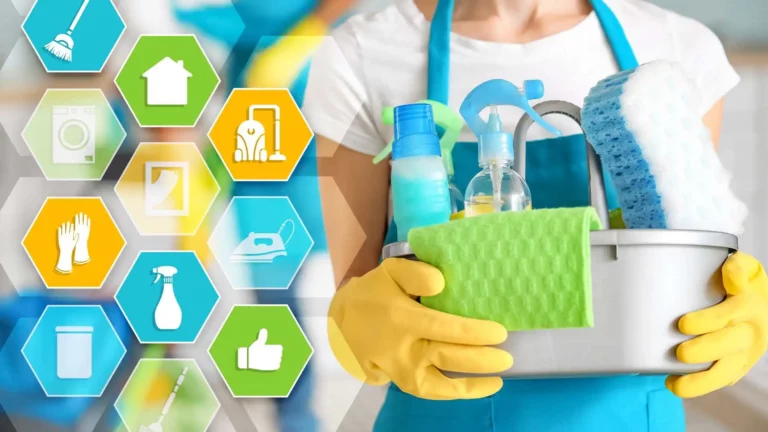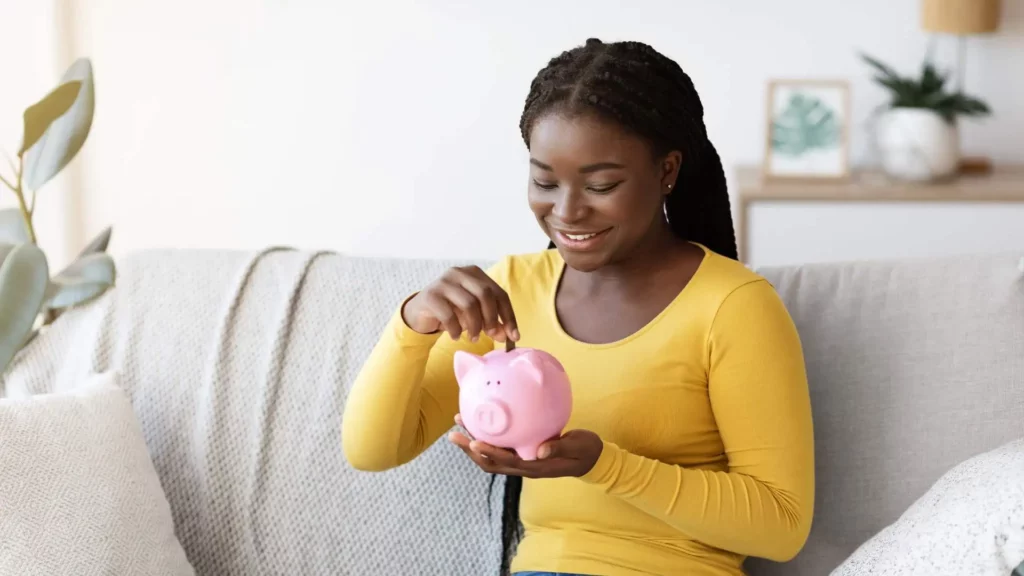Table of Contents
Walk into any home goods aisle, and you’ll see two versions of nearly everything: the disposable and the reusable. One costs less today, the other saves more tomorrow.
Yet most people still reach for the short-term fix, believing “sustainable” means “expensive.” However, the truth is that when chosen wisely, reusable gear can generate a real return on investment (ROI), not just for the planet, but also for your wallet.
This isn’t about buying fancy eco-products to feel virtuous. It’s about identifying the few items that truly pay for themselves, and creating a smarter consumption cycle that compounds savings year after year.
Let’s explore the gear, numbers, and habits that make “reusable” a money strategy, not a lifestyle slogan.
The Real Economics of Reusability
Reusable products only make sense if they cross the threshold between convenience and payback. Think of them as mini-assets: upfront cost now, reduced recurring costs later.
To understand the math, consider the ROI equation for any reusable item:
ROI = (Savings per use × Lifespan in uses) – Initial cost
Let’s apply it:
- A $40 stainless steel water bottle replaces 200 single-use plastic bottles, each costing $1s. That’s $200 saved or a 400% ROI.
- A $25 set of beeswax wraps lasts for 12 months, replacing around 10 boxes of plastic wrap (~$50). 100% ROI in one year.
- A $60 reusable air filter that lasts 5 years saves $120–$150 in replacements.
The principle is simple: if the product’s lifespan meaningfully outpaces its disposable counterpart, it’s an investment.
But the trick lies in choosing the right kind of reusable; not every “eco” label equates to savings.
Read related blog: Cash From Unused Gear: Best Resale Markets by Category
1. Reusables That Save in the Kitchen (Your Hidden Goldmine)
The kitchen is where most waste and wasteful spending happens. Switching to reusable gear here delivers quick wins.
a. Reusable Storage Bags and Containers
Silicone food bags and glass containers replace hundreds of single-use plastics per year.
Savings: ~$150–$200 annually if you pack lunches or meal prep regularly.
Bonus: Airtight sealing reduces spoilage — extending food life by up to 2–3 days.
b. Beeswax Wraps
These natural wraps keep produce fresher and cut plastic film costs in half.
ROI Tip: Buy quality wraps and “refresh” them with melted beeswax every few months for longer life.
c. Coffee Gear That Breaks Even Fast
A $20 French press or pour-over setup replaces $3–$5 daily coffee runs. Even if you splurge on quality beans, your ROI window is just 10 days of skipped takeout coffee.
Reusable items in the kitchen pay off not only through savings but through reduced waste and improved food management, a double dividend.
2. Everyday Personal Gear That Quietly Builds ROI
Not every reusable item is glamorous. Some are invisible savings machines.
a. Rechargeable Batteries
One AA rechargeable battery can replace up to 1,000 single-use batteries.
Cost comparison:
- Single-use: $1 × 1,000 = $1,000 lifetime spend
- Rechargeable: $2.50 battery + $15 charger = $17.50 total. That’s over $980 saved per battery slot.
b. Durable Water Bottles
Americans spend over $250/year on bottled water. A good reusable bottle ($30) with a filter eliminates that.
Payback time: ~6 weeks.
c. Reusable Razors and Blades
A metal safety razor kit ($40–$50) replaces disposable razors that cost $150–$200 annually.
Bonus ROI: Stainless steel blades last longer, and replacements cost just pennies per shave.
d. Reusable Makeup Remover Pads
One $20 set replaces 1,000 cotton pads ($80+). Easy to wash, easy to love.
Small gear, big compounding results.
Read related blog: Insurance for EVs: Battery Coverage, Repair Networks, and Discounts
3. Laundry & Cleaning Gear That Reduces Ongoing Costs
Household cleaning is a sneaky expense area where reusables quietly shine.
a. Wool Dryer Balls
Replace disposable dryer sheets for 1,000+ loads.
ROI: ~$80–$120 saved over their lifespan. They also reduce drying time by 25%, saving on electricity —a notable bonus.
b. Refillable Cleaning Concentrates
Switching from bottled cleaners to concentrated tablets (like Blueland or Grove) cuts packaging waste and cost per refill by 70%.
c. Reusable Mop Pads and Cloths
Microfiber mop pads and cleaning cloths replace 100s of paper towels or Swiffer sheets.
Annual savings: $100–$150 on average households.
Tip: Wash them in cold water and air dry. This extends lifespan by 2x.
These simple swaps don’t just clean better. They “clean” your budget over time.
4. Apparel and Lifestyle Gear That Pays You Back
Clothing care and wearable gear are long-game savings zones if you buy with intention.
a. Quality Reusables for Menstrual Care
Reusable menstrual cups or washable period underwear cost approximately $40–$60 upfront, but save $120–$150/year compared to disposable products.
ROI window: 4–6 months. And they can last up to 10 years.
b. Reusable Shopping Bags
A $2 bag replaces 200+ plastic bags. Even better, many stores now charge 5–10¢ per plastic bag — turning reusable bags into a literal profit.
c. Clothing Repair Kits and Lint Shavers
Extending the life of clothes by even six months saves the average household $100–$200 per year. Reusable repair tools mean fewer fast-fashion replacements and less textile waste. Durability is the quiet currency of frugality.
Read related blog: OEM Parts vs Aftermarket in Claims: How to Protect Your Repair Quality
5. Tech & Home Upgrades That Generate Long-Term ROI
Not all reusables are small. Some big-ticket items deliver huge compounding returns.
a. Water Filters and Purifiers
A high-quality water filter pitcher ($40) or under-sink system ($150–$200) replaces bottled water, paying for itself in 2–3 months for most families.
Environmental ROI: 1,000+ plastic bottles avoided yearly.
b. Reusable Air Filters
Washable HVAC or AC filters ($50) can last 5 years or more. Compared to buying $15 disposable products every three months, that’s over $250 saved.
c. Rechargeable Handheld Tools
Rechargeable flashlights, drills, and vacuums have higher upfront costs but eliminate battery waste and recurring purchases.
These are “investment gear”. They save through longevity, not frequency.
The Hidden Side of ROI: Time and Convenience
Not all returns are monetary. Time and convenience are real currencies, too.
Reusable systems reduce “decision fatigue.” You don’t keep re-buying, refilling, or remembering small purchases. That mental clarity — knowing your gear works, lasts, and saves — creates a compound effect in your lifestyle and your budget discipline.
Think of it as “automation for your habits.”
Read related blog: How to Measure the ROI of Upskilling: A Step-by-Step Guide for Organizations
Reusable Gear That Pays for Itself
| Item | Initial Cost | Savings per Year | Payback Time | Average Lifespan | ROI (5-Year) |
| Stainless steel bottle | $30 | $250 | 6 weeks | 5 years | 733% |
| Rechargeable batteries (set + charger) | $17.50 | $200 | 1 month | 5 years | 1,000%+ |
| Beeswax wraps | $25 | $50 | 6 months | 1 year | 100% |
| Wool dryer balls | $15 | $90 | 2 months | 3 years | 500% |
| Metal safety razor | $45 | $150 | 4 months | 5 years | 333% |
| Reusable storage bags | $30 | $100 | 4 months | 3 years | 233% |
| Water filter pitcher | $40 | $250 | 2 months | 3 years | 525% |
How to Choose the Right Reusable Products (Without Greenwashing)
Not every reusable item earns its price. Some are “eco-theater,” designed to sell sustainability rather than deliver it.
Here’s how to filter the hype:
- Check the cost per use: Divide the price by the frequency at which you’ll realistically use it.
- Evaluate maintenance: Some reusables need extra care (washing, recharging, storage) if upkeep costs time or energy; factor that in.
- Test replacement rates: If it doesn’t replace at least 50–100 disposable units, it’s not true ROI.
- Stick to function, not trend: You don’t need bamboo cutlery for every bag. Start with what you already use daily.
The smartest saver isn’t the one who buys the most reusable items. It’s the one who buys fewer, better ones.
The Compounding Effect of Reusables
Each reusable item adds a small but consistent gain to your financial rhythm. Alone, it’s $20 here or $50 there, but together, the system compounds.
Over five years, a household adopting just five of these swaps (storage bags, dryer balls, reusable bottles, batteries, and razors) could easily save $1,000–$1,500. That’s an emergency fund, a weekend getaway, or investment capital sitting quietly in your routines.
Read related blog: Mobile Car Detailing: Kit, Pricing, and Weather Plans
The “Mindset ROI”: How Shifting Your Thinking Multiplies Savings
The biggest transformation doesn’t come from the gear itself. It comes from how you think about consumption. Most of us buy to replace, not to retain. We plan around running out. Switching to reusables rewires that mental loop.
When you start asking, “How long will this last?” instead of “How much does this cost?” every purchase becomes a decision about investment. This shift has ripple effects:
- You start buying less impulsively.
- You value longevity over novelty.
- You track usage, which naturally sharpens budgeting habits.
It’s not just the bottle or bag that saves money. It’s the mindset muscle you build every time you reuse instead of re-buy.
The Hidden ROI of Quality: Why the Cheapest Reusable Isn’t Always the Best
The fastest way to waste money on “sustainable” gear? Buy cheap versions that break early. Real savings come from durability, not just “reusability.” A $15 silicone bag that lasts five years is a better value than a $6 version that cracks in six months.
It’s the same with steel bottles that never leak, kitchen tools with lifetime warranties, or microfiber cloths that survive 500 washes.
A simple rule of thumb: If you’ll use it daily, buy the version built to last.
Premium reusables often cost more upfront, but their cost per use plummets over time, and that’s where true ROI hides. Think of it as “slow spending” with fewer purchases, better quality, and infinite payoff.
Read related blog: Differences Between Savings and Investments | Beem
The “Community Effect”: How Shared Reuse Amplifies Value
Reusability doesn’t have to be a solo act. When neighbors, families, or workplaces adopt it collectively, the ROI multiplies.
- Neighborhood sharing: One set of power tools, ladders, or camping gear can serve multiple homes, cutting everyone’s spending by 70–90%.
- Family pooling: Share food containers, cleaning supplies, or reusable grocery bags in a central system; no one has to double-buy.
- Workplace swaps: Encourage the use of shared mugs, cutlery, or refill stations. Many companies now save hundreds monthly on disposable supplies.
Collective reuse isn’t just cost-efficient. It’s social glue. It turns small money habits into community culture, where saving together feels empowering, not restrictive.
Tracking the Payback Period: Turning Reuse Into a Mini Investment Plan
You track your mutual fund returns. Why not your reusable ROI? Treat every reusable item like a micro-asset with its own “payback clock.”
Here’s how to do it:
- Record your purchase date and cost.
- Estimate savings per use or per month.
- Mark your “break-even” point.
- Celebrate the moment it pays for itself.
Once it crosses that line, it’s pure profit every time you use it. This small ritual transforms sustainability into a gamified finance experience, and watching your savings accumulate feels addictive in the best way.
The Emotional ROI: Confidence, Control, and Calm
Money saved is great. But what reusables really buy you is control.
- You stop running out of essentials.
- You stop relying on fluctuating prices.
- You start trusting your systems and habits.
Every reusable item is a small vote for stability, for not needing to rely on marketing cycles or impulse purchases at the store. And that creates a sense of calm that’s deeply financial in nature. You’re not just saving money.
You’re reducing uncertainty, and that’s the kind of wealth that doesn’t show up in spreadsheets.
How Beem Makes Everyday ROI Trackable
Beem transforms smart habits into visible savings.
- BFF Budget Planner: Automatically tracks grocery, utilities, and household spending — showing exactly how reusable habits impact monthly budgets.
- Everdraft™ Instant Cash: Provides up to $1,000 interest-free to invest in upfront reusable items or energy-saving upgrades.
- Cashback Rewards: Earn cashback on sustainable purchases like home goods, cleaning tools, and kitchen essentials.
With Beem, sustainability isn’t a philosophy. It’s a line item in your financial growth.
FAQs on Reusable Gear That Pays for Itself: True ROI Items
How do I know if a reusable product is worth it?
Calculate the total cost per use and compare it to the cost of disposable alternatives. If it pays for itself within a year, it’s worth buying.
Are reusables always eco-friendly?
Not necessarily. Some have high manufacturing footprints. Focus on long-lasting, recyclable materials like stainless steel, glass, or silicone.
What’s the best first reusable swap for beginners?
Start with high-frequency items, such as water bottles or storage bags. They save the fastest and require no habit change.
Do reusables require extra effort?
Initially, yes. Washing or maintaining them adds a step. However, once integrated, they simplify your routine and reduce the time spent re-purchasing.
How can I effectively track my savings?
Use Beem’s Smart Wallet to log reusable purchases as “assets” and compare reduced grocery or household supply expenses over time.
From Reuse to Real Returns
Reusable gear isn’t just an environmental choice. It’s a financial system that compounds invisibly. Each swap you make reduces dependency on recurring costs, builds habit equity, and transforms daily life into quiet profit.
The secret isn’t to buy more. It’s to reuse smarter.
With Beem guiding your spending, tracking your returns, and funding your upgrades with ready Instant Cash, every sustainable choice you make becomes a financial one too.
Start today with one swap. Track it, enjoy it, and discover how small, reusable items can help you build long-term wealth. One refill, one recharge, one reuse at a time. Download the app now!















































